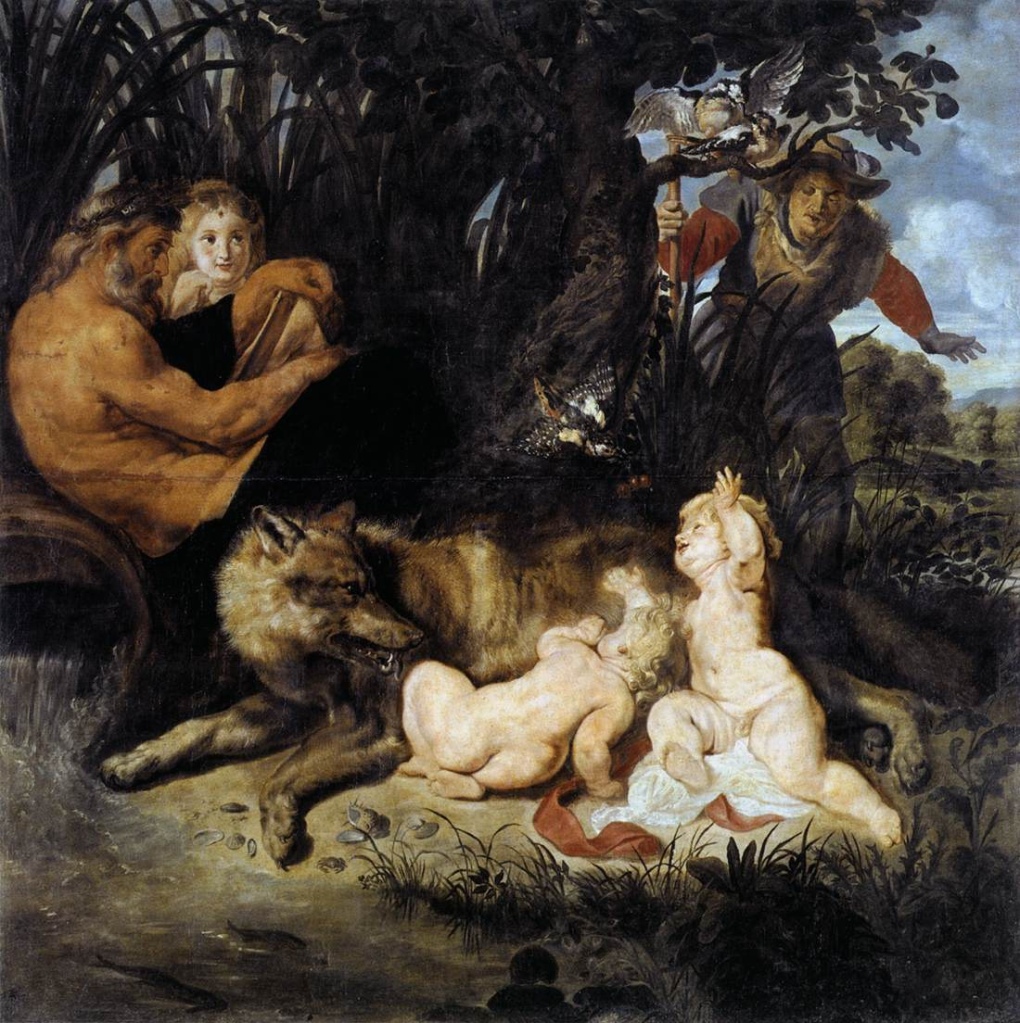
As far back as 6th Century BC..
Historically Lupercalia was an ancient pagan festival held each year in Rome on February 15. Although Valentine’s Day shares its name with a martyred Christian saint, some historians believe the holiday is actually an offshoot of Lupercalia. Unlike Valentine’s Day, however, Lupercalia was a bloody, violent and sexually charged celebration awash with animal sacrifice, random matchmaking and coupling in the hopes of warding off evil spirits and infertility. It should be no surprise that many of us that identify as Satanists are highly intrigued by this factual history.
No one knows the exact origin of Lupercalia, but it has been traced back as far as the 6th century B.C. According to Roman legend, the ancient King Amulius ordered Romulus and Remus—his twin nephews and founders of Rome—to be thrown into the Tiber River to drown in retribution for their mother’s broken vow of celibacy. Which very much sounds like a case of a marginalized individual being treated as an outsider for not following societal norms at the time.
A servant took pity on them, however, and placed them inside a basket on the river instead. The river-god carried the basket and the brothers downriver to a wild fig tree where it became caught in the branches. The brothers were then rescued and cared for by a she-wolf in a den at the base of Palatine Hill where Rome was founded.
The twins were later adopted by a shepherd and his wife and learned their father’s trade. After killing the uncle who’d ordered their death, they found the cave den of the she-wolf who’d nurtured them and named it Lupercal.
It’s thought Lupercalia took place to honor the she-wolf and please the Roman fertility god Lupercus. Highly pagan in practice that we would bring honour to the wild primal female lone wolf who saved us from the cruelty of conformed society. It’s no wonder witches of all folk practices would hail this day.
Ritual Sacrifice
Lupercalia rituals took place in a few places: Lupercal cave, on Palatine Hill and within the Roman open-air, public meeting place called the Comitium. The festival began at Lupercal cave with the sacrifice of one or more male goats—a representation of sexuality—and a dog.
The sacrifices were performed by Luperci, a group of Roman priests. Afterwards, the foreheads of two naked Luperci were smeared with the animals’ blood using the bloody, sacrificial knife. The blood was then removed with a piece of milk-soaked wool as the Luperci laughed.
In modern times we of course can find many ways of enacting a sacrifice of sorts without causing harm to anyone or thing in the process. One could purchase meat locally from a butcher to host a feast, donate money to a local animal shelter, build an alter with natural items associated with the holiday etc – the choice is yours.
Feast of Lupercal
In Ancient Rome, feasting began after the ritual sacrifice. When the feast of Lupercal was over, the Luperci cut strips, also called thongs or februa, of goat hide from the newly-sacrificed goats.They then ran naked or nearly-naked around Palantine whipping any woman within striking distance with the thongs.
During Lupercalia, the men randomly chose a woman’s name from a jar to be coupled with them for the duration of the festival. Often, the couple stayed together until the following year’s festival. Many fell in love and married.
Over time, nakedness during Lupercalia lost popularity. The festival became more chaste, if still undignified, and women were whipped on their hands by fully-clothed men.
Of course this all seems a little extreme now days however if some are so inclined to participate in a consensual sexual endeavour of sorts then they should feel free to do so. This holiday is about celebrating our primal selves, showing our love in whatever way suits us personally.
Saint Valentine
There are several legends surrounding the life of Saint Valentine. The most common is that on one February 14 during the 3rd century A.D., a man named Valentine was executed by the Roman Emperor Claudius II after being imprisoned for assisting persecuted Christians and secretly marrying Christian couples in love.
As the story goes, during Valentine’s imprisonment he tried converting Claudius to Christianity. Claudius became enraged and ordered Valentine to reject his faith or be killed. He refused to forsake his faith, so Valentine was beheaded. This of course placed him in a place of martyrdom to which Christians have painted him as some kind of saviour – which he wasn’t really. Like always the Christians needed a reason to convert pagans already celebrating a holiday into something else the church deemed more appropriate but around/on the same day and renaming it.
Legend also tells of another story that happened during Valentine’s imprisonment after he tutored a girl named Julia, the blind daughter of his jailer. The legend states God restored Julia’s sight after she and Valentine prayed together. On the eve of his execution, Valentine supposedly penned a note to Julia and signed it, “From your Valentine.”
Some historians believe more than one man named Valentine was executed by Claudius II. Despite the ambiguity surrounding Valentine and his life, the Catholic Church declared him a saint and listed him in Roman Martyrology as being martyred on February 14. Being that most countries were founded on Christian faiths it’s why we have the holiday still to this day despite it having to deal ties to the history of Lupercalia.
Origins of Valentine’s Day
Thanks to Saint Valentine’s reputation as a “patron of lovers,” he became synonymous with romance. In the late 5th century A.D., Pope Gelasius I eliminated the pagan celebration of Lupercalia and declared February 14 a day to celebrate the martyrdom of Saint Valentine instead, although it’s highly unlikely he intended the day to commemorate love and passion. In fact, some modern biblical scholars warn Christians not to celebrate Valentine’s Day at all since it’s thought to be based on pagan rituals (hehe!)
It’s true Valentine’s Day uses some of Lupercalia’s symbols, intentionally or not, such as the color red which represented a blood sacrifice during Lupercalia and the color white which signified the milk used to wipe the blood clean and represents new life and procreation.
Like many ancient traditions, there’s a lot of haziness surrounding the origins and rituals of Lupercalia and how they influenced Valentine’s Day. Lupercalia is no longer a mainstream, public celebration for obvious reasons, but some non-Christians still recognize the ancient event on February 14 (instead of Valentine’s Day) and celebrate in private.
During this holiday many of us satanists find ourselves celebrating in a variety of ways – we encourage you all to HAIL YOURSELVES – be true to your primal nature & Hail Satan!!
